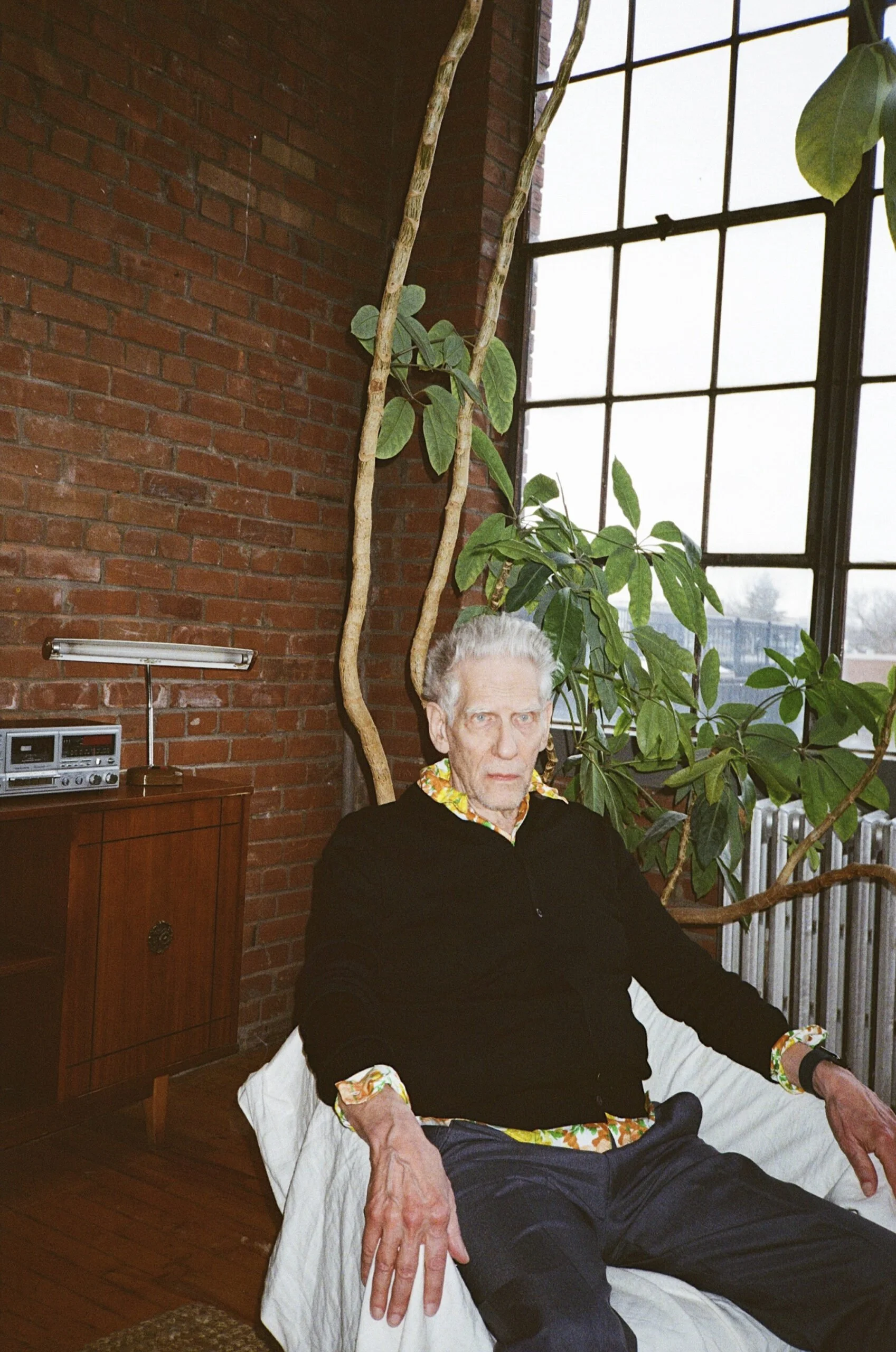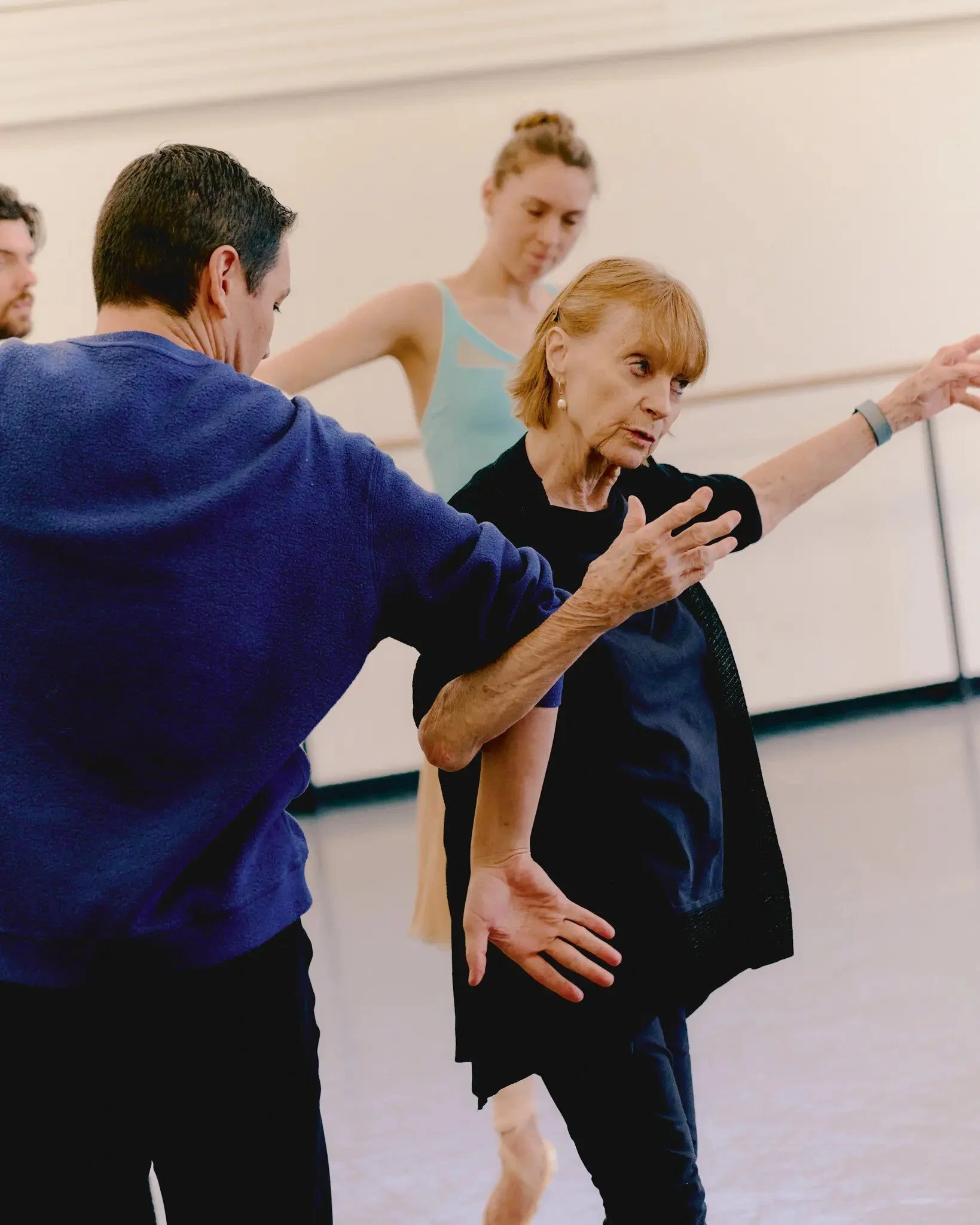A few weeks ago, I read Everyone Is Cheating Their Way Through College in The New York Magazine. I thought about all these 20-something kids copying and pasting prompted essays into a Google Doc and potentially having them be marked with the aid of AI by professors who have given up. Computers talking to each other in a void we created.
I’ll lighten the mood with a quote from a recent interview in Interview Magazine: Humans Can Be Very Depressing”: David Cronenberg, by Jim Jarmusch.
David Cronenberg Photographed by Christopher Sherman.
CRONENBERG: Humans can be very depressing, yeah. That’s why I really love babies, because they haven’t learned how to be destructive yet. [Laughs]
JARMUSCH: Now we’re getting a little negative. But when I get depressed by the state of the world, I try to appreciate the very strange phenomenon of having a consciousness. I think, “Life on earth is such a fragile, brief thing.” The fact that we’re even here talking to each other is remarkable, and therefore something to celebrate. My friend Joe Strummer from the Clash always used to say to people, “When you get really low, you only have to remember one thing: You’re alive!” So I try to hold that close. But lately, I don’t know.
Being alive takes physical form. It takes having a very crude, animate, raw, embarrassing, intimate, funny, painful physical form. And the best parts of us are expressed when we make something with our physical form. It’s why I sit and wait at that confluence where people who actually make things reveal themselves. It takes work. You have to read, go to museums, watch films, attend shows, take classes, fumble with your own makings, play with children, listen to conversations. In short, you have to show up as a curious person willing to learn, practice, be exasperated, repeat yourself. You have to prompt yourself and not a machine, so you can find yourself in happenstance when the currents merge for a moment.
Two women merged recently.
This clip from Steven McRae: Dancing Back to the Light, of Leslie Collier coaching the principal dancer of The Royal Ballet as he recovers from a career-threatening Achilles tendon. The documentary was uneven but this piece stayed with me:
Do you know as we get older, we have unresponsive anything, and that is where artistry comes into it. I mean it’s hard to say that but where all your experience will come.
So I wouldn’t even..Just go where it is now, and build other things. You love building stories; build a story.
Leaving room for your heart
rather than closing, dropping,
and a little softness in the face.
The more you work it sincerely, the better chance you have of a longer life.
It was her very measured delivery that stood out in contrast to the frenetic anxiousness of the no longer younger artist dealing with physical limitations. It had weight and honesty to it. It’s learning that only comes from years of craft, of physical heft, of nuance.
A few weeks later, I found myself reading Once an Inspiration to Balanchine, Suzanne Farrell Now Shows the Way in the New York Times. Lesley and Suzanne’s move towards confluence had began decades ago. In the clip above, Lesley was coaching Steven through Rhapsody. It premiered in August 1980, at the Royal Opera House, with the two principal roles danced by Baryshnikov and Collier. In 1978, Baryshnikov joined the New York City Ballet, where he worked with George Balanchine. And since 1963, Balanchine had originated many of the lead roles at the New York Ballet for Suzanne Farrell.
Suzanne Farrell photographed by Vincent Tullo for The New York Times
